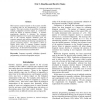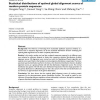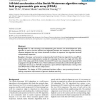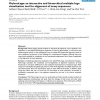545 search results - page 34 / 109 » Multiple Sequence Alignment Using Tabu Search |
BMCBI
2004
13 years 10 months ago
2004
Background: The prediction of ancestral protein sequences from multiple sequence alignments is useful for many bioinformatics analyses. Predicting ancestral sequences is not a sim...
ISMB
1998
13 years 11 months ago
1998
DNA sequence analysis depends on the accurate assembly of fragment reads for the determination of a consensus sequence. This report examines the possibility of analyzing multiple,...
BMCBI
2005
13 years 10 months ago
2005
Background: The inference of homology from statistically significant sequence similarity is a central issue in sequence alignments. So far the statistical distribution function un...
BMCBI
2007
13 years 10 months ago
2007
Background: To infer homology and subsequently gene function, the Smith-Waterman (SW) algorithm is used to find the optimal local alignment between two sequences. When searching s...
BMCBI
2007
13 years 10 months ago
2007
Background: When aligning several hundreds or thousands of sequences, such as epidemic virus sequences or homologous/orthologous sequences of some big gene families, to reconstruc...




